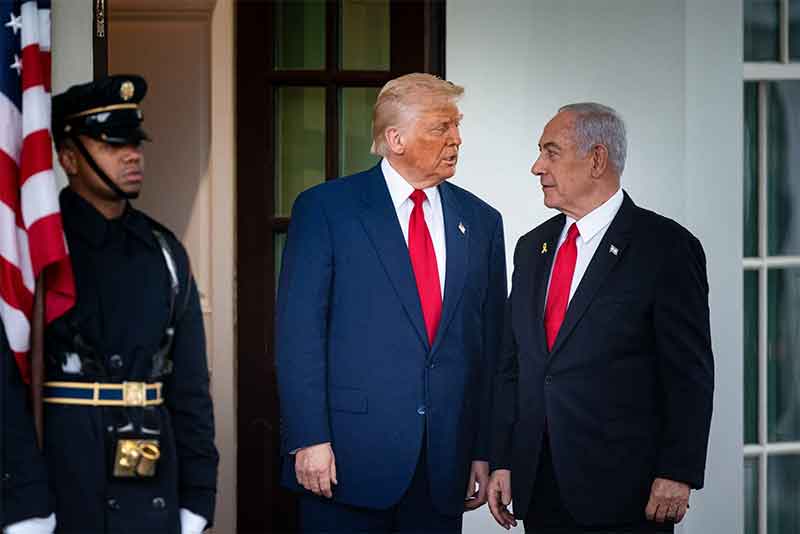
The Global Peace Index (GPI) ranks 163 independent states and territories according to their level of peacefulness, covering 99.7 per cent of the world’s population. Produced by the Institute for Economics & Peace (IEP), the GPI has been frequently mentioned as the world’s leading measure of global peacefulness. Its 18th edition in 2024 has presented important data which show the rising incidence and costs of conflicts and wars.
One of the most significant findings of this report is that many of the conditions that precede major conflicts are higher now than they have been since the end of the Second World War. This is in line with several warnings voiced by leading commentators regarding the possibilities of the Ukraine war or the Gaza conflict escalating into a much wider war, perhaps even the Third World War and a nuclear war.
In addition the number of conflicts are also increasing in various parts of the world. As the GPI tells us, there are currently 56 active conflicts, the most since the end of Second World War, and with fewer conflicts being resolved, either militarily or through peace agreements. This is deeply worrying, as this means that wars now tend to drag on for longer periods and the capacity of the international community or the United Nations to end them soon has decreased. This also means that the distress suffered by people due to conflicts and wars has increased.
The GPI tells us further that the number of conflicts that ended in a decisive victory fell from 49 per cent in the 1970s to nine per cent in the 2010s, while conflicts that ended through peace agreements fell from 23 per cent to four per cent over the same period. If only 4 per cent of the conflicts are now ending with peace agreements, this is surely very bad news for the forces of peace. What has gone wrong? Why has the United Nations become much less involved and much less successful in securing peace agreements?
The latest GPI tells us that conflicts are also becoming more internationalised, with as many as 92 countries now engaged in a conflict beyond their borders, the most since the inception of the GPI in 2008, complicating negotiation processes for a lasting peace and prolonging conflicts. Trying to explain this worrying phenomenon, the GPI argues that the “internationalisation of conflict is driven by increased great power competition and the rise of middle level powers, who are becoming more active in their regions.”
Further GPI 2024 tells us that although the measures of militarisation had been improving for the first 16 years of the GPI, the trend has now reversed and in 2024 militarisation deteriorated in 108 countries.
The combination of these factors, GPI argues, means that the likelihood of another major conflict is higher than at any time since the inception of the GPI. This is perhaps the most important as well as the most worrying finding emerging from the GPI. This should be a wake-up call as this finding is based on a lot of data and information which have been captured in the form of emerging trends by the GPI.
According to the GPI, this year’s results found that the average level of global peacefulness deteriorated by 0.56 per cent. This is the 12th deterioration in peacefulness in the last 16 years, with 65 countries improving and 97 deteriorating in peacefulness. This is the highest number of countries to deteriorate in peacefulness in a single year since the inception of the index.
Further the GPI states that the conflict in Gaza has had a very strong impact on global peacefulness, with Israel and Palestine having the first and fourth largest deteriorations in peacefulness respectively. Ecuador, Gabon, and Haiti were the other countries with the largest deteriorations in peacefulness.
Subscribe to Our Newsletter
Get the latest CounterCurrents updates delivered straight to your inbox.
Thus while the GPI indicates disturbing trends at several levels, its findings relating to increased possibilities of a bigger conflict and the decreasing possibilities of peace agreements contributing to end of conflicts are the most worrying. This indicates very clearly that we are moving towards a world of increasing conflicts including possibly major and wider conflicts and the capacity or willingness to secure early peace agreements has diminished significantly.
All this adds up to a very strong case for strengthening the peace movement in many ways in the near future. The peace movement is being found to be very inadequate and weak precisely at a time when the need for its much stronger and wider presence is the greatest.
Bharat Dogra is Honorary Convener, Campaign to Save Earth Now. His recent books include Planet in Peril, Protecting Earth for Children, A Day in 2071 and Man over Machine.











































